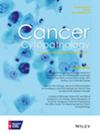Writing our way through academia: Our journey as young faculty and book authors
IF 3.2
3区 医学
Q3 ONCOLOGY
引用次数: 0


书写我们的学术之路我们作为青年教师和图书作者的心路历程
他们不仅对内容的生成很有价值,而且可以提供实时反馈和见解,以改进本书。确定合适的合作作者如上所述,要编写出最好的教科书,还需要更多的视角。确定合适的合著者可能具有挑战性,因为编写一本书的内容需要投入大量的时间。随着病理学家的短缺和病例量的增加,很难找到愿意付出时间的人。这可能会使成书过程变得更加复杂,但最终是值得的。在与可能的合著者联系时,重要的是要考虑一些事情,以确保他们是合适的人选。应首先考虑发表过文章和参与过研究的人作为合著者。他们已经具备了学术写作的基础,并且通常了解其专业领域的最新进展。此外,他们还可能有一名实习生与他们合作。这种合作可以让个人获得指导经验,同时帮助受训者或初级教师提高学术写作技巧。第二件最重要的事情是,团队项目的负责人必须非常清楚章节的范围、预期的时间承诺、作者的顺序以及提交的初步时间表。如果提交的截止日期很紧,不妨提前设定一个截止日期,以留出潜在的回旋余地。另外,在向共同作者提供工作机会之前,最好要求他们提供简历,并查看他们的出版物和研究专长,以确定他们的能力。最糟糕的事情莫过于,因为合著者的文章低于预期或根本就没有开始,而不得不重写或撰写整个章节。此外,应在转让之前明确作者身份顺序、书籍版税(如果有的话)以及对作者贡献的其他形式的补偿。在项目开始前正式撰写同意书并让他们签字是否明智。如果在项目启动前没有这样做,那么他们的名字在书中的位置就有可能不符合他们的期望(即封面与章节扉页)。选择合适的出版商选择合适的出版商是图书出版的另一项挑战。大多数出版商都是以营利为目的,因此知道哪些书能卖出去,哪些书卖不出去。最好的办法是找到一家出版本专业教科书的学术出版社。这些出版社通常会要求向其提交一章样本。经过内部审查和市场调研后,出版社会做出决定。如果做出了有利的决定,就会签订出版合同,合同中会有具体条款,包括最后期限。因此,如果您打算通过这一途径出版,遵守最后期限非常重要。合同的其他条款还包括版权、版税、责任和其他问题。如果您使用的是学术出版商,但其出版流程不适合您的需求,您还可以选择其他方式出版教科书。这些选择包括通过亚马逊、B&N Press 等公司直接出版(自助出版)。虽然这些公司可能不太受学术机构的青睐,但对于年轻教师来说,这可能是迈出的第一步。直接出版会带来一些挑战,因为您通常必须支付校对和编辑、营销费用,以及确保您的材料以适当的格式制作成电子书。降低审稿/编辑成本的一个潜在解决方案是让学术界人士审稿。志愿审稿人面临的挑战是,他们基本上没有义务尽最大努力审稿,因为审稿需要的不仅仅是阅读。审稿人没有发现的文本中的错误可能会对图书的销售能力产生深远影响,因为出版后会出现负面评论。例如,有些人在经济上有出版图书的动机,他们可能会利用你的作品,而你可能没有意识到这一点。例如,如果没有签订协议,直接出版图书的个人,无论是以企业名义还是个人名义,都有可能将这些作品复制并粘贴到未来的图书中,而根本不会询问你或让你意识到这一点。
本文章由计算机程序翻译,如有差异,请以英文原文为准。
求助全文
约1分钟内获得全文
求助全文
来源期刊

Cancer Cytopathology
医学-病理学
CiteScore
7.00
自引率
17.60%
发文量
130
审稿时长
1 months
期刊介绍:
Cancer Cytopathology provides a unique forum for interaction and dissemination of original research and educational information relevant to the practice of cytopathology and its related oncologic disciplines. The journal strives to have a positive effect on cancer prevention, early detection, diagnosis, and cure by the publication of high-quality content. The mission of Cancer Cytopathology is to present and inform readers of new applications, technological advances, cutting-edge research, novel applications of molecular techniques, and relevant review articles related to cytopathology.
 求助内容:
求助内容: 应助结果提醒方式:
应助结果提醒方式:


